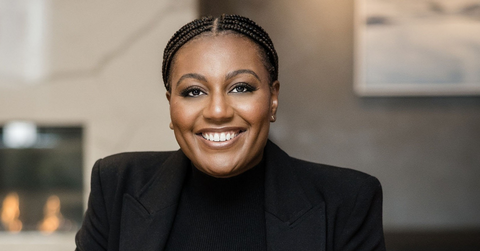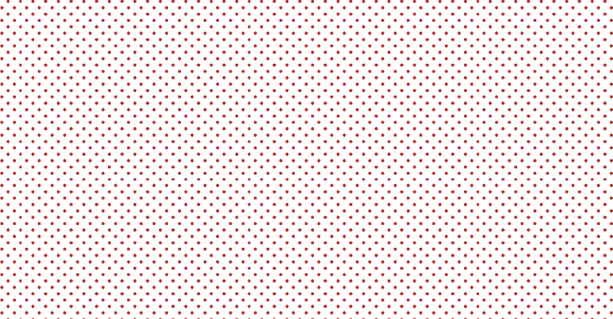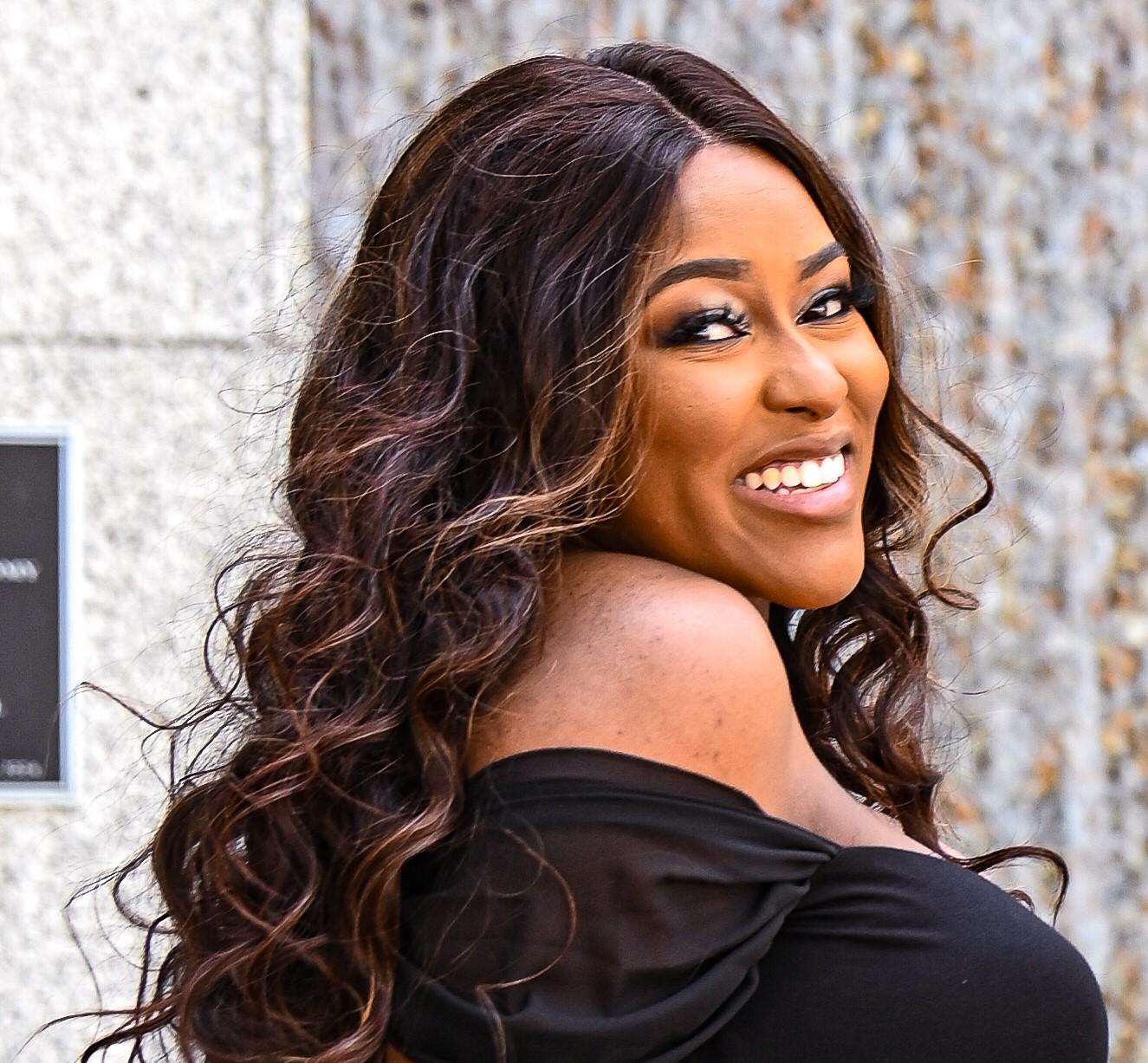When TIME announced The Closers list in 2024, notable names like Issa Rae and Imani Ellis topped the list, but the name behind the list is a closer in her own right.
Sadé Muhammad is closing the gap in storytelling and marketing through her role as the Chief Marketing Officer (CMO) of TIME. She’s the first to take on the role since the company became independent in 2018.
Seeing a Black woman who focuses on impact and growth for a legacy news publication through platforming underrepresented and underestimated audiences is pivotal in a time where those stories are often unheard. Her connection to storytelling began as a child and grew when she participated in the NBC Page program. When she realized the power to publish stories was directly tied to the business outcomes (along with a nudge from her mother, who has also held the role of CMO), Sade shifted from journalist to marketer.
Her strategic approach to combining sharing powerful narratives with business impact is how she built her reputation as a changemaker. During her 7-year tenure at Forbes, she founded and supervised the award-winning B2B ad business Representation & Inclusion before being tapped to lead marketing at TIME.
“TIME for a change” is a brilliant way to position Sadé Muhammad. Although her story as an executive is still being written, she has already helped push forward change in media. Learn more about her journey and insights in our interview.

Her Agenda: What impact do you believe journalism played in your career trajectory? Do you think it gave you any unique perspective as a marketer or any unique advantage as an executive?
Sadé Muhammad: Absolutely. Journalism played a huge role in my path. I think the reason why I wanted to pursue journalism was because I wanted to give a voice to people that I felt didn’t have a voice. [This included] people who look like me, [and] people in my community at large. And then I just love to write. As a kid, my hobby was creative writing.
Then, once I figured out we’re being misrepresented in the media (and by we, I mean Black people), that’s what made me pursue journalism. In terms of how that affects marketing, as a journalist, you’re essentially [immersed in] whatever story you’re covering. You don’t necessarily have to be an expert on that topic. You just have to be an expert on truth-telling and finding the right story and really dig into what’s really happening. I try to approach marketing in the same way. The brand is one thing, but it’s just about how that brand expresses itself. [I take] that objective lens to marketing, which I get from my background in journalism and allowing the truth of what a brand is to come to the forefront and then adding my creativity on top of that to create something new.

Her Agenda: One of the unique things about marketing is that there are so many areas to tap into. How do you ensure that the marketing you all do has a qualitative and quantitative impact, knowing that, at the end of the day, it still has to have a business/revenue impact?
Sadé Muhammad: For us, the qualitative impact of TIME specifically is convening power in stories that move the needle, whether that’s a story that we do that leads to something happening, a policy change, or a story being investigated further. Those are the real qualitative outcomes that can come from our journalism.
And then those quantitative outcomes [are] really [important] because I focus on B2B and developing partnerships. [We want] our partners to feel as though they came away with a win beyond impression goals and typical standard KPIs. [My goal is that] at the end of a partnership, they come away with more relationships that they can convert into new business.
Yes, we want to meet KPI goals, but I like to think about how I am helping transform our partner’s business. And if we can do that in a meaningful way, and they’re using our superpower, then that’s a good partnership. Our superpower is convening, truth-telling, establishing trust, and bringing experiences to life.

Her Agenda: I love hearing how you feel about the strategy, which brings up another question for me: How do you feel about the paywall elimination, and how does that support your vision for marketing TIME?
Sadé Muhammad: I think everyone should have access to information, and not just information, but balanced and good information.
News literacy is one of the best pathways that we have to create a more balanced world. Because what happens when you don’t have news literacy? Then you start to go with what you hear from the [biases] of the people you’re around, as opposed to some of the critical thinking that’s needed to form a full opinion. We’re not interested in telling you what to think, but it’s important for us to come to the table with balanced news. If we can make that news accessible to anyone at any time, then we’re doing our part to lead to a more informed citizen, which is essentially what we’re trying to help create.
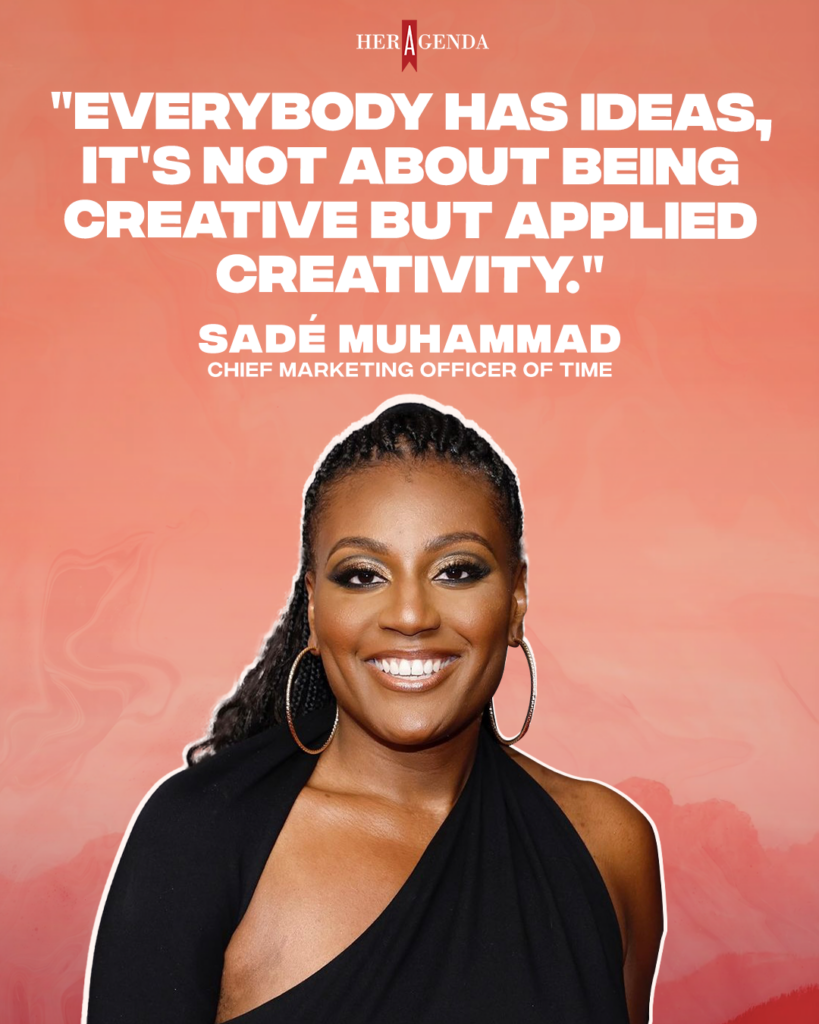
Her Agenda: My next question is related to TIME’s CEO, Jessica Sibley. I know you worked with her previously at Forbes. How did you build trust with someone who was a senior leader and vice versa?
Sadé Muhammad: I think a good career and a career that you enjoy are about having people that you enjoy working with. It’s important to enjoy what you’re doing and not only to enjoy it but also to be around like-minded thought partners who share your values, work ethic, and vision. And so in Jess, I see a partner in each of those things. It was easy to say yes because she trusted me.
If you trust me, then I trust you, too, right? I think it’s just a matter of shared values and really being able to have honest conversations, to be transparent, [and] that’s something that we’ve always done with one another. And I think that’s a basis for any good relationship in general, and especially in your career.

Her Agenda: I wanted to know how you felt about stepping into the role of CMO. So of course, it has been something that has been getting a lot of media attention. I was really curious personally, because I see myself one day hopefully being a CMO. People see the role being eliminated or diminished, or they’re letting other executives take on the marketing function. What are your general thoughts on the CMO role?
Sadé Muhammad: I’ve always tried to remain very close to revenue. I actually got that advice from my mom, who has been a CMO herself. And her advice to me was to stay close to the revenue, so I’ve tried to do that.
And by that, I mean, you can come up with the most creative ideas in the world, but if they don’t tie to business outcomes that can be proven quarter to quarter, you’re putting yourself in a difficult [position]. People’s memories are very short. They might forget the amazing idea that you had, but if you can point to the business result, that’s what stays. Ideas are a commodity.
Everybody has ideas. It’s not about being creative but applied creativity. Applying that [creativity] in a way that satisfies internal and external stakeholders drives the business forward in a way that meets results.
People ask about my brand strategy, and they’re looking for some really incredible vision, but it’s simple. It’s driving business results through creative thinking, problem-solving, and good ideas that serve our audience.
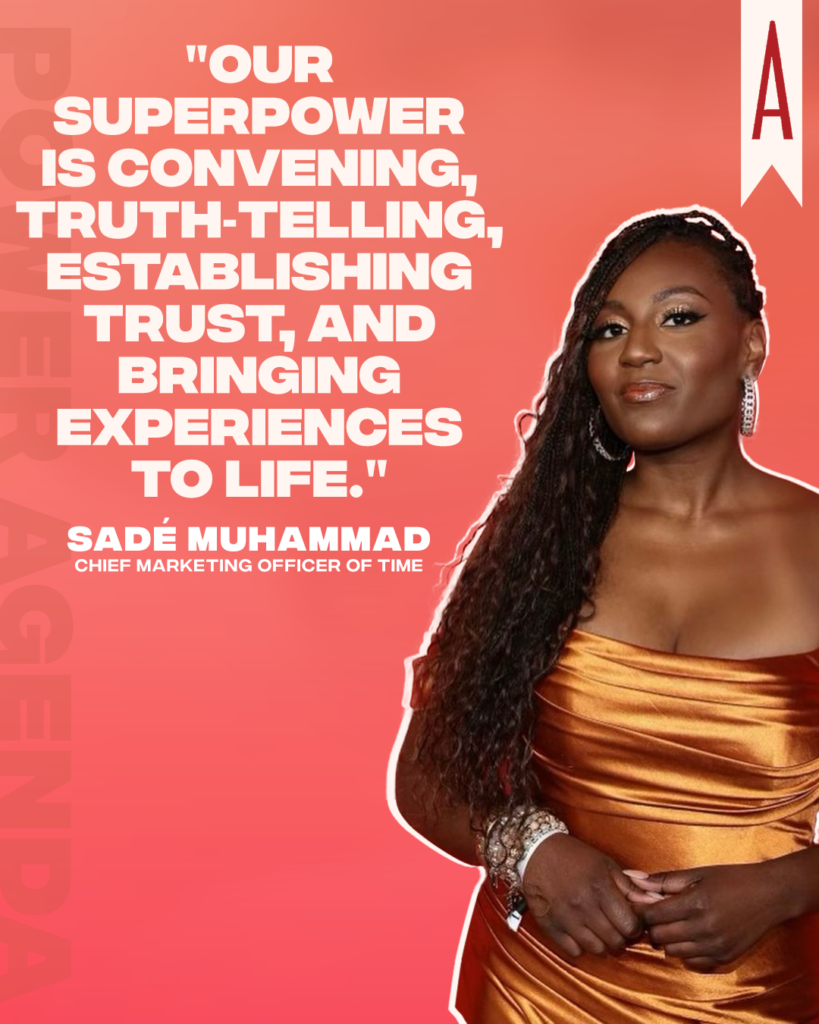
Her Agenda: As a marketer, I try to approach marketing by applying creativity, if that makes sense. Absolutely. Trust me, I know everybody has ideas for marketing.
Sadé Muhammad: I’m like, how are we going to get these done? And you have to say no to a lot of good ideas. Sometimes, the most creative idea is not the right idea, you know? So, it’s not always about the most out-of-the-box thing. It’s about what I can do repeatedly well that, in time, will move the needle for this brand.
Her Agenda: My last question is kind of like a two-part. I want to know what’s the most eye-opening moment or favorite part of your first year, and then to follow, what do you hope that your legacy will be in this role? Sadé Muhammad: The thing that was most eye-opening to me about TIME was really the affinity that people have for the brand and the visceral effect that it has. You see folks’ eyes light up when they tell stories about their childhood and their dad leaving an issue on the nightstand. You hear people talk about how they learned to read. And then on the other side, I hear people say I didn’t see myself in TIME until you started, or now I can actually see myself in TIME. That’s really what I want my legacy to be: someone who thought that they didn’t have a place in TIME now believes and knows that they do.
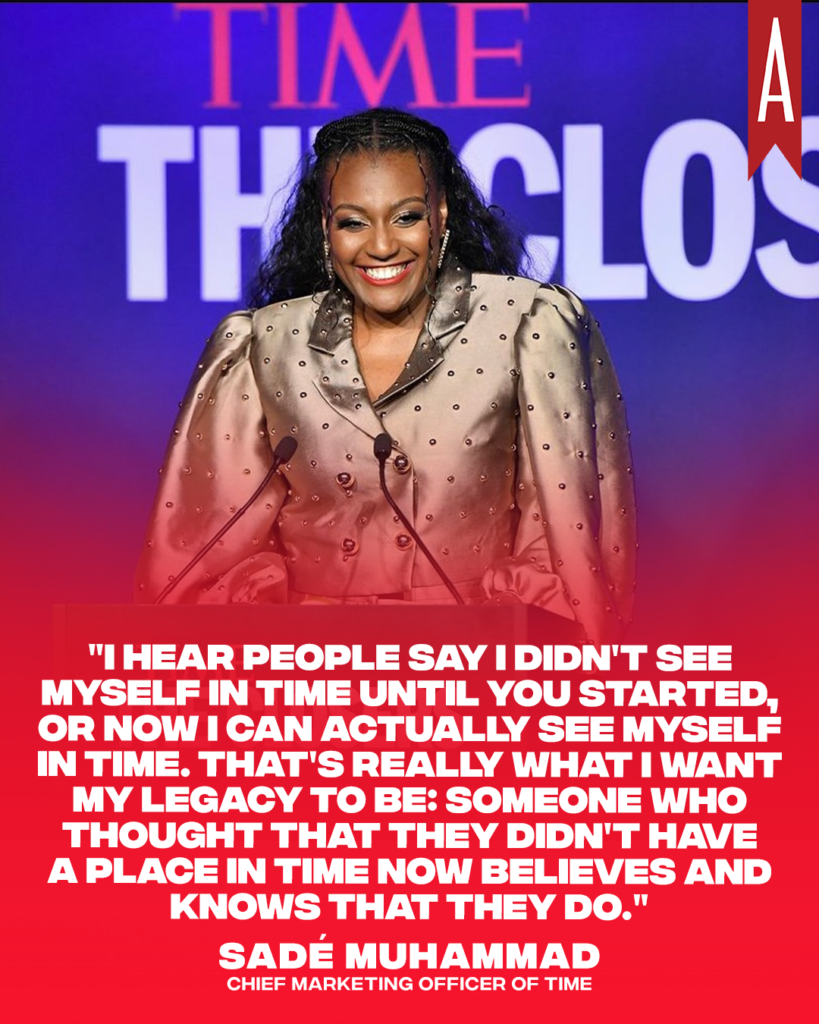
[Editor’s note: This interview has been edited for length and clarity.]

